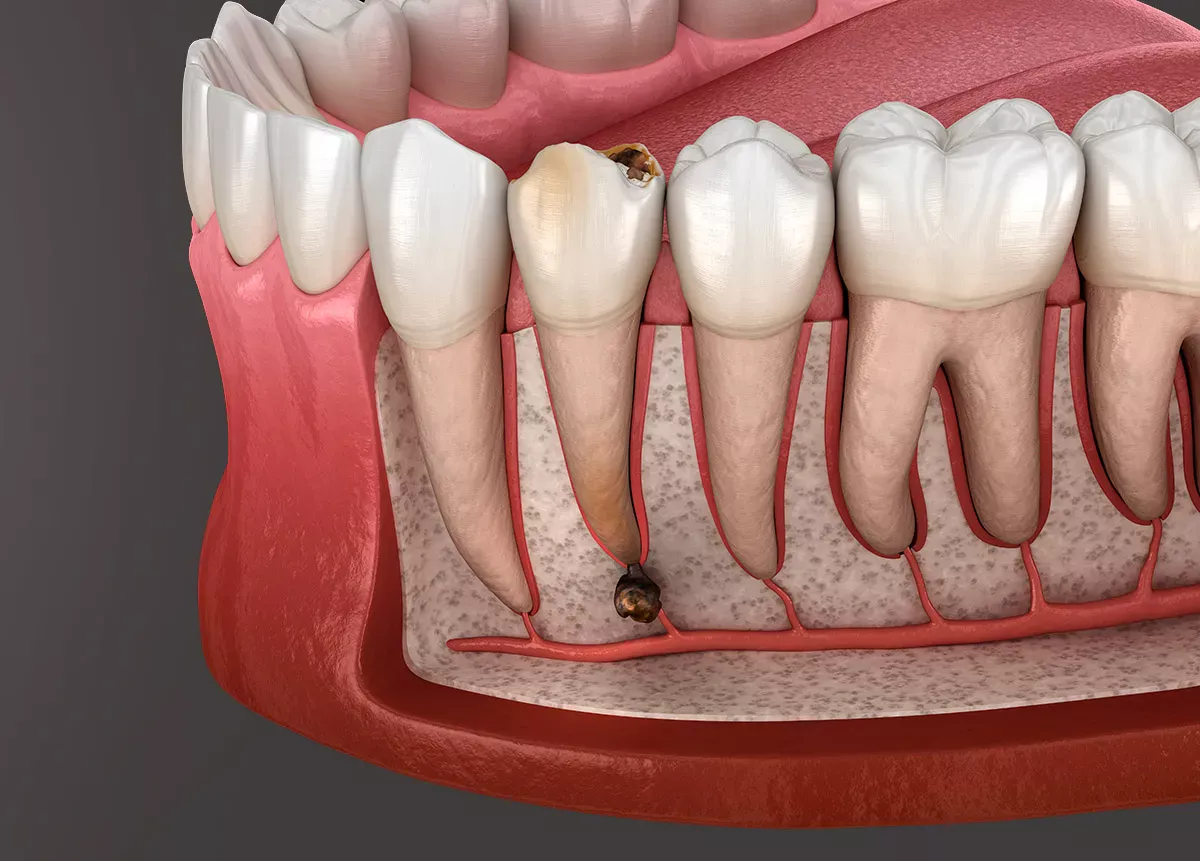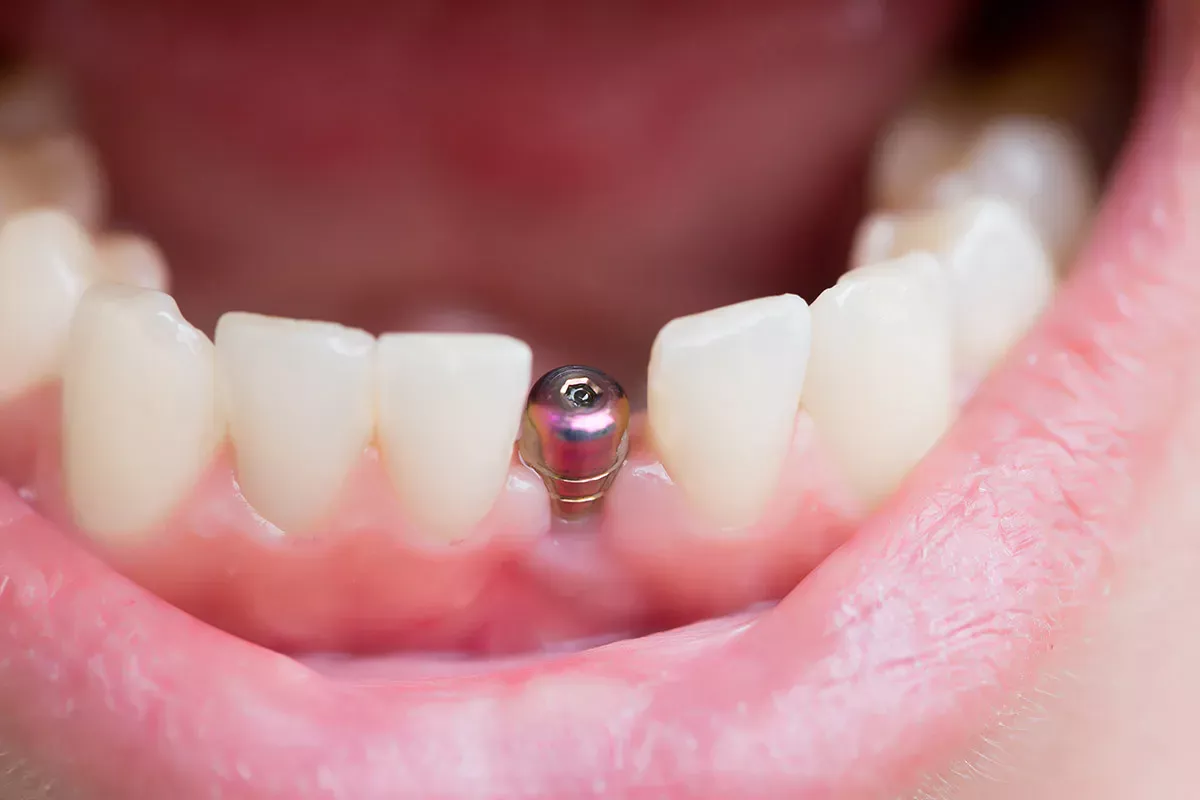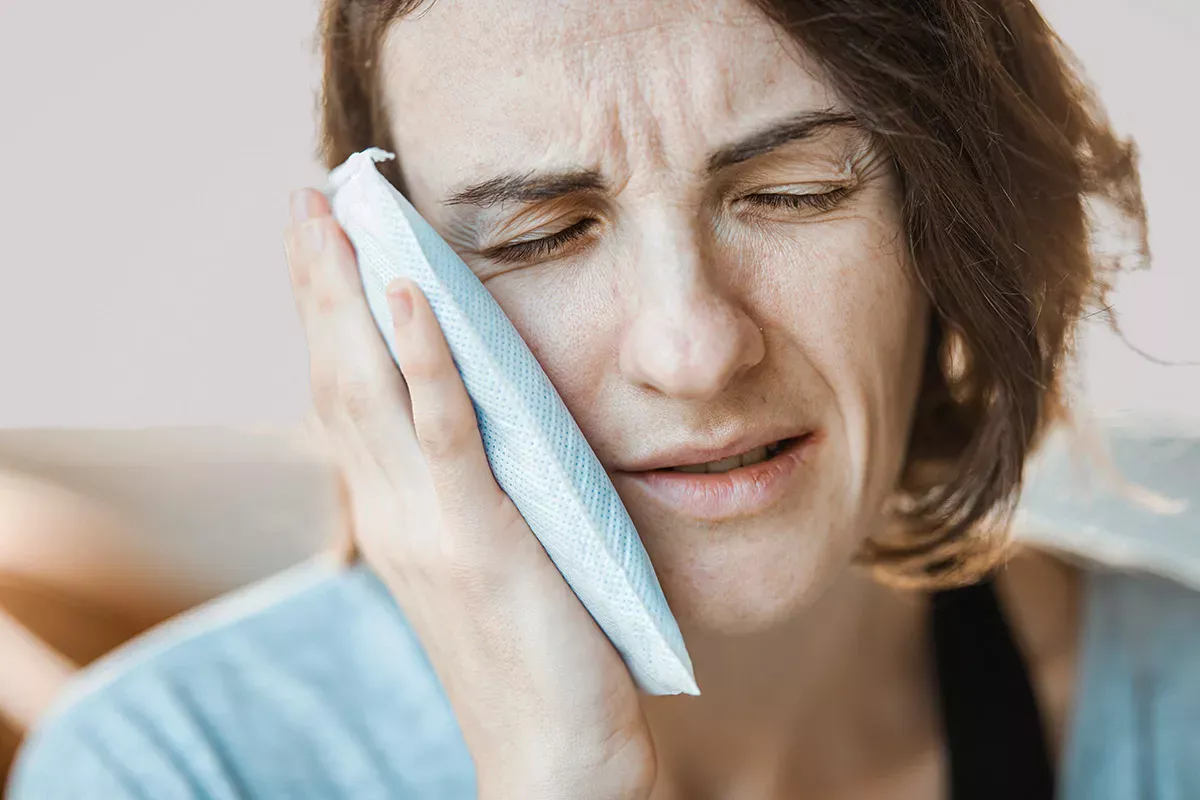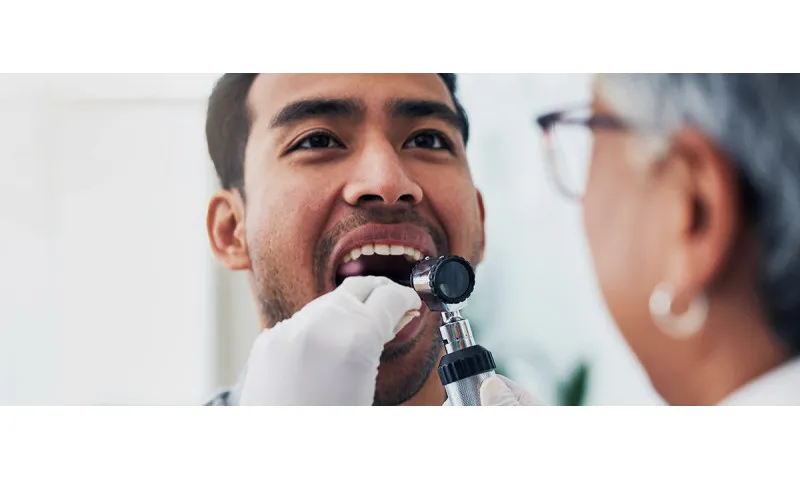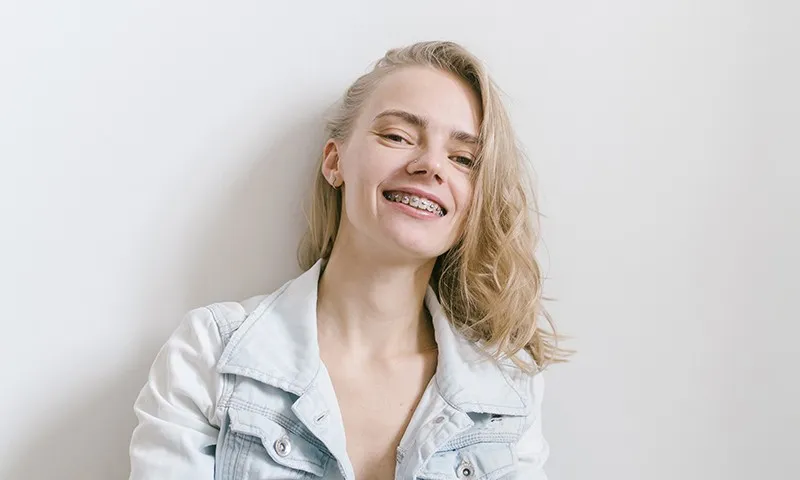Tooth extraction: What exactly does that mean?
When we talk about "tooth extraction", we usually mean the complete removal of a tooth. The dentist first loosens the affected tooth using various instruments and then pulls it out of the jawbone using pliers. The entire tooth, including the roots, is removed. In more complicated cases, dental surgery may also be necessary. The medical term for this procedure is tooth extraction. The extraction of a tooth may be necessary for various reasons.
After changing from milk teeth to permanent teeth as a child, many people experience the topic of "tooth extraction" for the first time when it comes to wisdom teeth. After all, they often have to be extracted due to a lack of space in the jaw. Over the course of a lifetime, however, the removal of all other teeth may also become necessary.
Causes: When do you have to extract a tooth?
When it comes to tooth extraction, one principle applies: only extract a tooth if there is no other option. If there is a possibility of preserving the tooth, dentists will do everything they can to prevent the tooth from being extracted. However, this is not always possible. In the following situations, tooth extraction is unavoidable:
Caries and periodontitis
If a tooth is severely damaged by advanced caries, dentists usually try to save it first with root canal treatment or apicoectomy. During root canal treatment, the inflamed inside of the tooth is completely removed and replaced with a filling. In an apicoectomy, the inflamed part of the tooth root is sawn off. However, it can happen that a tooth has to be extracted even after root canal treatment or apicoectomy because the inflammation returns despite treatment.
Good to know:
You can find out exactly what root canal treatment is in our article:
If the tooth is so badly damaged by caries that it can no longer be repaired or if it is so loose due to periodontitis that it is unlikely to grow back, dentists may recommend extracting it immediately.
Accident
If a tooth breaks off in an accident and the tooth nerve is damaged, the tooth cannot always be saved. If those affected act quickly, a dentist can also carry out root canal treatment and restore the broken tooth with a crown or partial crown. If this is not possible, the dentist must extract the rest of the tooth from the jaw.
Cyst
A cyst is a fluid-filled cavity in the bone that can cause severe pain and swelling when inflamed. If you have a cyst in the upper or lower jaw, the affected tooth may need to be extracted.
Lack of space or malposition
If, during orthodontic treatment - for example in preparation for braces - it is determined that the jaw is too small for all the teeth and will remain so, space can be created for the remaining teeth by extracting a tooth. As a rule, the small molars are then removed.
Preventive removal in case of serious illness
In the case of serious illnesses, teeth may have to be extracted as a precaution if they could jeopardise the success of treatment or worsen the condition. Even minor infections can have a serious impact on a weakened immune system. This applies, for example, to cancer patients undergoing chemotherapy or radiotherapy in the neck and head area. If existing dental problems are not treated, the condition of the teeth and overall oral health can deteriorate significantly during treatment, as the immune system is weakened and bacteria have an easy time of it. In addition, wounds heal less well during cancer treatment. This is why experts recommend extracting dodgy teeth before treatment.
In the case of organ or bone marrow transplants, dental germs can lead to rejection of the transplant, while in the case of heart disease there is a risk of endocarditis caused by dental germs. For these reasons, suspicious teeth can also be extracted as a precaution.
Good to know:
How do chemotherapy and radiotherapy affect oral health and what can you do to minimise side effects? We have summarised all the important information for you in one article:
Tooth extraction procedure
If you are due to have a tooth extracted, you are probably wondering how long it will take. As a rule, the tooth extraction itself is completed within a few minutes - the preparation and follow-up work usually takes longer than the procedure itself.
But who actually extracts teeth ? Your dentist can either do this themselves or refer you to an oral surgeon if it is a complex procedure. In emergencies, the dental emergency service can also extract a tooth. However, one thing is certain: you should never pull a tooth yourself ! This type of procedure requires specialised equipment, experience and a sterile environment. If you do it yourself, you are jeopardising your oral health.
As a rule, you will go through the following steps when your dentist extracts a tooth:
Step 1: Consultation and examination
First of all, the dentist will examine your tooth carefully and take x-rays to assess whether tooth extraction is really necessary. He will also inform you about possible alternatives, costs and risks.
Step 2: Anaesthesia
A local anaesthetic is normally used when extracting teeth. To do this, the dentist injects an anaesthetic into your gums near the tooth to be extracted. Due to the local anaesthetic, you will not feel any pain during the tooth extraction, only a slight feeling of pressure.
Patients who are afraid of the dentist can receive a general anaesthetic as a health insurance benefit if their dental phobia has been officially diagnosed. Those who prefer not to be aware of the procedure but still want to be responsive can have their tooth extracted under the influence of laughing gas - however, patients must cover the costs themselves.
Good to know:
Did you know that over half of Germans are afraid of the dentist? So this is by no means a reason to be ashamed! Find out what can help in our article:
Step 3: Tooth removal
During a normal tooth extraction without dental surgery, the dentist first removes the tooth from the gum and loosens it with a lever using rotating and tilting movements. Tooth extraction is not a feat of strength: It is more a matter of dexterity. Only when the tooth is really loose can it be pulled out of the jaw with the pliers. If it were simply pulled out of the jaw with brute force, it would break. For uncomplicated tooth extractions, it takes about five minutes to pull the tooth out; if there are complications, the procedure can take up to an hour. The duration also depends on the number of roots: Front teeth with only one root are extracted more quickly than molars with three roots.
Step 4: Wound cleansing
Once the tooth has been extracted, the wound is cleaned and the inflamed tissue is removed. To do this, the dentist scrapes out the gap in the gum. They will also check that the tooth has been completely removed to prevent inflammation caused by any remaining pieces of tooth. If everything is clean, the dentist will ask you to bite on cotton wool for about half an hour to stop the bleeding. This forms a blood clot in the gap, which seals the wound and protects it from bacteria.
If a tooth has been extracted without dental surgery, it usually does not need to be sutured.
Possible complications when extracting the tooth
In most cases, tooth extraction is carried out without any problems. Around 90 per cent of all tooth extractions are completed within five minutes. However, not every tooth can be extracted without problems. If a tooth is already damaged down to the roots or the roots are severely curved, the tooth may break during extraction. It is also possible that it is clear from the outset that the tooth will have to be split into several pieces - this is often the case with wisdom teeth.
It is important that the dentist removes all fragments of the tooth from the jaw. Otherwise they could become inflamed and cause severe pain. Under certain circumstances, this can be achieved with special tools via the tooth gap. However, the dentist may also have to cut open the mucous membrane and open the jawbone with a burr in order to remove all root remnants. In this case, the wound must be sutured after the tooth residue has been removed. The stitches are removed after a week.
Immediate implant for tooth extraction
After the tooth has been extracted, there is a gap in the dentition that should be filled with dentures. Under certain conditions, an implant can be placed directly after tooth extraction - in the same treatment session. This allows the implant to grow in firmly during the healing process and saves you another operation.
However, certain conditions must be met for immediate implants:
- Healthy jawbone
- Inflammation-free tissue
- Extracted tooth with only one root
If you suffer from bone recession in the jaw, the implant will not have enough support and cannot grow in stably. In addition, implants cannot be placed in inflamed tissue because, unlike teeth, they have no immune defence. In the case of molars with three roots, it is also not possible to place implants in one session directly after the tooth has been extracted because the implant has to be placed in the centre of the gap - i.e. theoretically exactly between the three root holes.
Implant procedure after tooth extraction
The procedure for inserting implants directly after tooth extraction is as follows:
- The tooth is extracted.
- The implant is inserted into the free tooth socket.
- For anterior teeth, a fixed temporary restoration is screwed directly onto the implant in order to maintain aesthetics and function.
- After two to three months, when the implant has healed in the bone, a permanent denture is made.
Good to know:
Even if you don't decide in favour of an implant, you should look for a dental prosthesis as soon as possible after the tooth has been extracted in order to maintain both the function and aesthetics of the jaw. You can find out what other options are available in our article:
Risks of tooth extraction
In addition to the possible complications described above, the following problems can occur during tooth extraction:
- Pain after tooth extraction
- Swelling ("fat cheek") and bruising ("bruises")
- Damage to neighbouring teeth or nerves
- Opening of the maxillary sinus
- Ingestion or inhalation of tooth fragments
- Inflammations
- Bleeding
- Poor wound healing
Risk groups
Dental procedures can trigger endocarditis in people with congenital heart defects or artificial heart valves. This is why these high-risk patients are given antibiotics as a precautionary measure to reduce the risk of inflammation.
After a heart attack, no routine dental treatment should be carried out for six months and no teeth should be extracted, as there is a high risk of a reinfarction. Patients who are taking blood thinners due to heart disease, such as atrial fibrillation, must inform their dentist as this can lead to increased bleeding.
In diabetic patients, wound healing after tooth extraction may be impaired, meaning that the wound may heal very slowly or poorly.
Costs
The costs of tooth extraction, including local anaesthetic, are covered by statutory health insurance - this applies to both milk teeth in children and permanent teeth and includes wound care and follow-up checks.
However, additional forms of anaesthesia such as nitrous oxide or twilight sleep are not covered by health insurance. If you want to be additionally anaesthetised, you usually have to pay for this yourself. However, there is one exception: if you suffer from an officially diagnosed dental phobia, you can apply to have the costs of a general anaesthetic covered.
Good to know:
You can find more information on the different types of anaesthesia - from local anaesthesia to nitrous oxide and hypnosis to general anaesthesia - in our article:
7 tips: What do I need to consider after tooth extraction?
If your tooth has already been extracted, you're probably wondering how you can speed up the healing process. It's best to follow your dentist's instructions instead of experimenting with home remedies. The wound usually heals within seven to ten days after tooth extraction.
We have put together a list of what really helps with healing after tooth extraction:
1. Cooling against "fat cheek"
As soon as the anaesthetic has worn off, you can cool the affected area externally to prevent swelling. The best way to do this is to use a cool flannel or a cold pack. Place a thin cloth between the cold pack and your cheek, otherwise the cold will be too aggressive.
Some people swear by globules as a remedy for swelling and bruising after a tooth extraction. The active ingredient Arnica is particularly popular. Bear in mind, however, that there is no scientific evidence for the effectiveness of homeopathy. Improvements can often be attributed to the so-called placebo effect.
2. Take painkillers
Your dentist will tell you which painkillers you should take after the tooth extraction. Follow these instructions and take the painkillers as prescribed. It is normal to experience pain in the first few days after tooth extraction. However, if this pain lasts longer or recurs, you should contact your dentist as a precaution and have the wound examined to prevent inflammation.
Note: If a whitish layer forms on the wound, this is not necessarily pus and is not necessarily a cause for concern. Fibrin, a component of the blood, supports wound healing by forming a network of fibrin threads. This network is also yellowish-white in colour. If the wound becomes inflamed, you will notice that the pain is getting worse.
3. Adapt your diet
To support the healing process, you should change your diet for a few days. Here you will find answers to the most frequently asked questions about eating after tooth extraction:
How long after tooth extraction should I not eat?
After tooth extraction, you should wait until the local anaesthetic has completely worn off before eating. You can then eat soft foods.
How long after tooth extraction should I avoid dairy products?
As lactic acid bacteria can favour inflammation, you should avoid dairy products for the first three days after tooth extraction. The same applies to sugary and acidic foods.
When coffee after tooth removal?
You should avoid coffee for at least two days after tooth extraction. In general, hot drinks are taboo in the first few days after the procedure.
What to drink after tooth extraction?
To support wound healing, it is best to drink still water or lukewarm tea (for example sage, camomile or peppermint tea). Carbonated, sweet or sour drinks such as lemonade are less suitable.
What to eat after tooth extraction?
After having a tooth extracted, you should mainly eat soft foods. Spicy, hard and hot foods are particularly unsuitable as they can impair wound healing.
Experts recommend cream soups, mashed potatoes without milk, smoothies made from low-acid fruits, apple sauce, porridge and pudding (both without milk) as well as soft-boiled or pureed vegetables, eggs, fish and tender meat.
4. Abstain from alcohol and smoking
After having a tooth extracted, you should refrain from smoking and drinking alcohol for at least 24 hours - ideally even until the wound has completely healed. Tobacco and alcohol delay wound healing.
5. Allow the body to rest
The body can best utilise its self-healing powers if you allow it to rest. That's why you shouldn't do any sport for two to three days after tooth extraction. If you have had dental surgery, you should even avoid sport for a whole week. Physical exertion stimulates blood circulation and can lead to post-operative bleeding.
6. Avoid travelling by air
It's better not to have a tooth pulled just before going on holiday. The pressure that occurs during take-off and landing when travelling by plane interferes with wound healing. Experts generally advise not to fly for two days after dental treatment.
7. Brush your teeth as usual
Immediately after the procedure, you should leave your mouth completely alone for about 24 hours. After this time, you should brush all teeth that are not directly adjacent to the wound as normal with a soft toothbrush.
Your dentist will tell you when and whether you should use a mouthwash after the procedure and, if so, which mouthwash. Under no circumstances should you use a mouthwash immediately after the procedure. This may inadvertently loosen the blood clot that protects the wound from bacterial infection. Later, a mouthwash with chlorhexidine (for example, the Perio plus range of mouthwashes from Curaprox) may be useful to prevent inflammation. Ask your dentist for advice on this.
Good to know:
Your mouth is particularly sensitive after a tooth extraction. Curaprox has developed the CS Surgical toothbrush precisely for such situations: it is particularly gentle on the gums and yet cleans thoroughly.
Frequently asked questions
Many questions arise when a tooth is about to be extracted. We have collected a few for you here:
What time of day should you have a tooth extracted?
Most people are more sensitive to pain in the morning, evening and at night than in the afternoon. In the afternoon, there are significantly more endorphins and endogenous opioids in the brain, which ensure that we perceive pain as less intense. So when it comes to the sensation of pain, the afternoon is the best time of day to have a tooth extracted.
However, you will be given a local anaesthetic either way during a tooth extraction and will not feel any pain even if you have a dental appointment in the morning.
What if the anaesthetic doesn't work?
If you feel that the anaesthetic is not working when the tooth is extracted, you should tell the dentist as soon as possible so that they can inject more anaesthetic.
Can I have a tooth extracted despite having a cold?
If you have a cold, you should postpone your dentist appointment if possible. If you have a cold, your immune system is already busy fighting bacteria or viruses and cannot devote enough time to healing the wound.
Can I have a tooth extracted during pregnancy?
Dental procedures should be avoided as far as possible in the first and third trimester. However, if a tooth needs to be extracted urgently, this can still be done - ideally in the second trimester. Your dentist will carefully consider whether tooth extraction is really necessary. Local anaesthesia can also be used normally during pregnancy.
If a tooth needs to be extracted while you are breastfeeding, you should definitely inform your dentist that you are breastfeeding. This will allow them to avoid using iodine-based disinfectants, which are unsuitable when breastfeeding.
Good to know:
You can find out which treatments you can have during pregnancy and how to protect your teeth in our article
Is pulling teeth at the top or bottom worse?
It is generally easier to extract teeth from the upper jaw, as the upper jaw bone is softer than the lower jaw bone. Complications are more common when extracting teeth from the lower jaw.
Which is worse: tooth extraction or root canal treatment?
As a rule, dentists always try to preserve the tooth for as long as possible. This is why most dentists recommend root canal treatment first.
Which is worse: tooth extraction or apicoectomy?
Root tip resection is usually only used if root canal treatment has been unsuccessful and inflammation has formed again at the root tip. This can happen, for example, if fine ramifications were overlooked during treatment. If there is still a chance of preserving the tooth, dentists usually recommend root tip resection. Extraction of the tooth is only recommended if there is no possibility of preserving the tooth.
Do I get a sick note after having a tooth extracted?
Whether and for how long you will be on sick leave after tooth extraction depends on the extent of the procedure, your condition and the nature of your job. For example, if you have a physically demanding job, you should take two to three days off sick. For uncomplicated procedures and light work, sick leave may not be necessary and you can return to work as usual the next day.
For more complicated procedures, such as the extraction of wisdom teeth, a sick leave of up to one week may be necessary.
Good to know:
If you are due to have your wisdom teeth extracted, you will find everything you need to know on the subject in our article:
Sources
Alb Fils Clinics: Acute heart attack (myocardial infarction).
Ambulance Flight Centre: Flying with an infected tooth.
Daume, Linda: Kardiale Risikopatienten in der Zahnarztpraxis, on: zmk-aktuell.de.
Dentolo: The immediate implant: You should know these facts.
The dentist week (dzw): Pulling teeth despite blood-thinning medication.
Initiative proDente: Surgical interventions for diabetes.
Kassenzahnärztliche Bundesvereinigung (KZBV): When do you have to extract a tooth? and How does the treatment work?
Kassenzahnärztliche Vereinigung Nordrhein: Behavioural tips before and after surgery.
Quarks: That's why it's best to go to the dentist in the afternoon.
Reisenauer, Marlis: Tooth extraction: This is important if you have a tooth extracted, on: da-direkt.de.
Breastfeeding lexicon: Dental treatments during breastfeeding.
University Hospital Zurich: Atrial fibrillation.
Zahn Kaiser: What should I bear in mind after tooth surgery?
Dentist Prinzregentenplatz: apicoectomy or tooth extraction?
Zahnimplantat Klinik Düsseldorf: Dental implants: Smile again immediately after tooth loss.
ZPK Herne: Cyst removal from tooth, gum or jaw.
Future tooth: Tooth extraction - reasons, procedure and tips for rapid wound healing after a tooth extraction and To the dentist during pregnancy.
All websites last accessed on 03.01.2024.
 Swiss premium oral care
Swiss premium oral care

